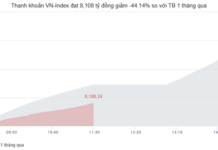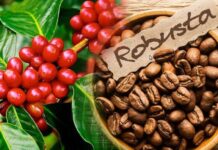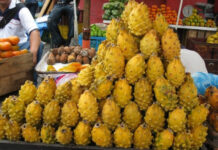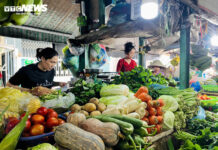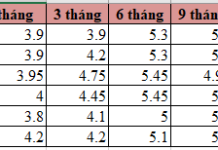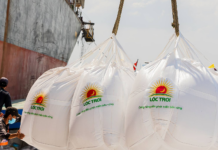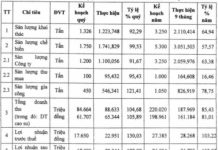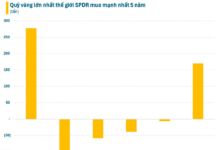Cassava is an integral crop in Vietnam’s agricultural sector, and its significance extends beyond food security. It has evolved from a staple crop to a cash crop, playing a vital role in the country’s industrial processing and biofuel production. Recognizing its potential, the Ministry of Industry and Trade has included cassava in the top ten export commodities, ranking third in export value after coffee and rice.
CASSAVA – A PROMISING INDIGENOUS RAW MATERIAL
On April 17, 2024, the Minister of Agriculture and Rural Development issued Decision No. 1115/QD-BNN-TT, approving the project “Sustainable Development of the Cassava Industry by 2030, with a vision towards 2050.” The project sets a target of achieving a fresh cassava production of approximately 11.5-12.5 million tons by 2030.
This includes utilizing 85% of the fresh cassava yield for deep processing into various products such as starch, ethanol, and monosodium glutamate. The plan also aims for 40-50% of the cassava-growing area to use quality-standardized seeds and for 50% of the area to adopt sustainable farming practices. Additionally, it targets an export turnover of 1.8-2.0 billion USD for cassava and cassava-derived products.
Looking ahead to 2050, the vision is for Vietnam’s cassava industry to continue its sustainable development journey. By then, it is expected that 70-80% of the cassava-growing area will adopt sustainable farming practices, with over 90% of fresh cassava yield dedicated to deep processing. The export turnover for cassava and cassava-derived products is projected to reach approximately 2.3-2.5 billion USD.
Four provinces, namely Dong Nai, Binh Phuoc, Tay Ninh, and Ba Ria – Vung Tau, are currently implementing a sustainable cassava project starting from April 2023, covering a total area of 78.6 hectares.
In Tay Ninh, with approximately 341,897 hectares of agricultural land, cassava cultivation accounts for 61,000 hectares, or 23%. The province has consistently excelled in cassava production, processing, and consumption, achieving remarkable results in terms of both yield and export turnover.
Recently, the Business Studies and Assistance Center (BSA) and the Association of Vietnamese High-Quality Goods Enterprises organized a seminar on the theme “Green Innovation – Integrating Cassava into Vietnamese Cuisine.” Experts emphasized the importance of developing products from green and sustainable raw materials in the context of globalization and climate change. Additionally, they highlighted how indigenous and nutrient-rich raw materials can drive innovation and preserve Vietnam’s culinary culture.
Speaking at the seminar, Ms. Vu Kim Hanh, Chairwoman of the Association of Vietnamese High-Quality Goods Enterprises, acknowledged that agricultural processing remains a challenging aspect for Vietnam. However, there have been positive developments in recent times, with the utilization of local resources and the application of technology leading to the creation of new products.
According to Ms. Hanh, translating creative ideas into tangible products and introducing them to the market will inspire and ignite the passion for innovation within the startup community. This aligns with the vision of a sustainable future driven by local resources from various provinces in Vietnam.
Moreover, the emergence of young entrepreneurs dedicated to harnessing local resources and transforming them into products that meet domestic and international market demands bodes well for the sustainable development of the food processing industry, particularly in the realm of agricultural products.
“While we may not be able to compete with France or the US in terms of technology, they don’t have access to cassava or wax coconut, which gives us a unique advantage,” emphasized Ms. Vu Kim Hanh.
BRINGING INDIGENOUS RESOURCES TO THE MARKET
Cassava is a familiar ingredient in Vietnamese cuisine, featuring in everything from rustic dishes in rural areas to refined desserts in upscale restaurants.
Additionally, cassava starch is used in the production of cakes and candies, and it can be fermented to make beverages, liquor, and other fermented products. It is also used as animal feed. Notably, cassava is a crucial input for businesses producing rice paper in many localities.

For instance, in Tay Ninh, the rice paper brand “Tan Nhien” has established itself in most localities and is exported to numerous countries worldwide. This brand is renowned for its unique production process that does not involve soaking the rice paper in water.
Sharing the story behind the utilization of cassava as a raw material for rice paper, Mr. Dang Khanh Duy, Director of Tan Nhien Company Limited, attributed their success to their profound understanding of cassava. In 2018, he and his wife embarked on this venture, investing in factory construction, purchasing production lines, and hiring workers.
Not only has Tan Nhien’s super-thin rice paper conquered the domestic market, but it has also ventured into international markets since 2020. Their products have attained the OCOP 4-star standard in Vietnam. Notably, their production process complies with the highest standard, FSSC 22000, certified by the Global Food Safety Initiative (GFSI). This certification has paved the way for their global expansion, with their products already present in China, South Korea, Taiwan, Japan, and soon, the United States.
In addition to rice paper, the company also offers a range of products under the brand name “Mr. Muoi,” utilizing local resources from various provinces, such as garlic from Phan Rang, salt from Tay Ninh, lotus seeds from Dong Thap, rock sugar from Quang Ngai, and crab from Ca Mau.

